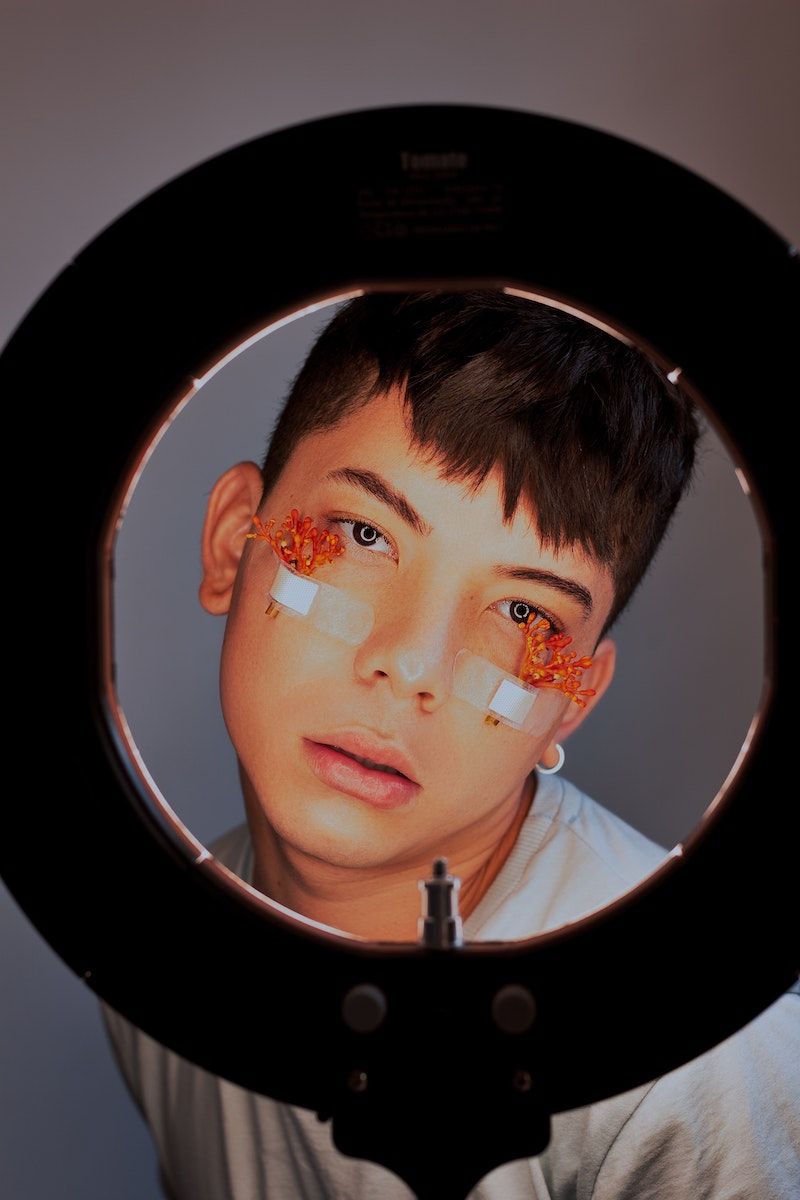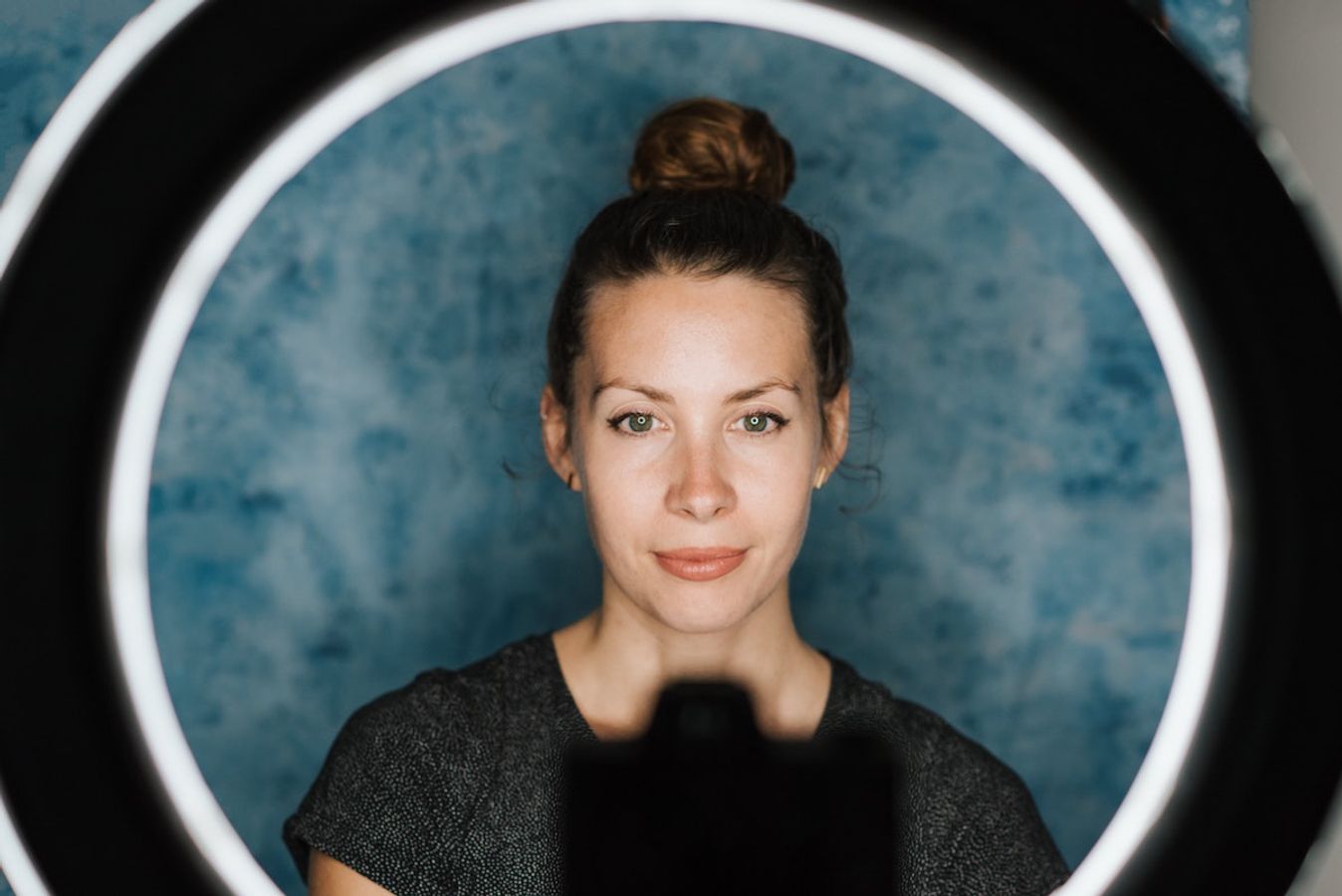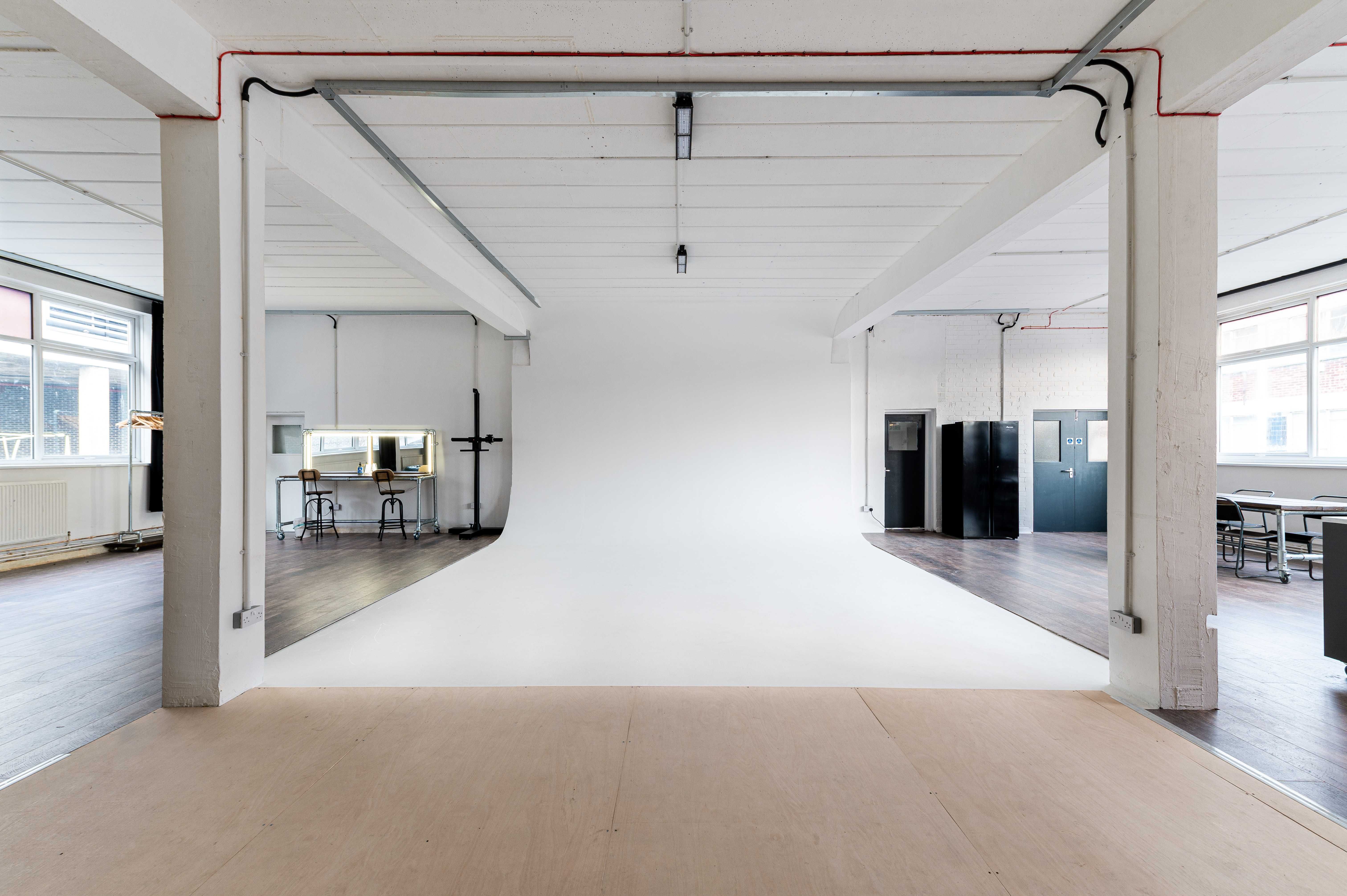Ring lights have become immensely popular with video creators on YouTube and social media, but today we want to talk about why you need one in your photography toolkit.
In this guide you'll learn everything you need to start incorporating ring lights into your photo shoots, whether you're a commercial, lifestyle or headshot photographer. They are one of the simplest lighting options around and you'll be so glad you added them to your collection.
Contents
- What is a ring light?
- Types of ring lights
- Ring lights in photography
- Purchasing a ring light
- How to setup your ring light
- Creative photoshoot ideas with a ring light
What is a ring light?

A ring light is a lighting device designed in the shape of a circular ring. You can place a camera lens through the central opening to emit an even and diffused light from all directions.
Ring lights may be associated with the world of content creation but they are certainly not new inventions! They were originally developed for use in the dentistry profession to achieve uniform lighting when taking images of peoples' teeth.
These original ring lights were made with fluorescent tubes, but these days, many ring lights comprise multiple LEDs instead, allowing them to last longer and use less power.
You can usually tell when a ring light is being used in video and photography because the circular shape produces a reflection in the subject's eyes known as a catchlight.
Thanks to the soft and even lighting they produce, ring lights are ideal for reducing harsh shadows and enhancing delicate features.
Types of ring lights

As their popularity has increased, the number of specialty ring lights have exploded. Here are the types of ring lights used most commonly in photography:
Continuous LED ring lights
These are the most popular type of ring lights. They emit a constant and steady light, making them suitable for both photography and video work. LED ring lights often have adjustable brightness and colour temperature settings, allowing for versatile lighting options.
You can buy continuous ring lights in both on and off-camera format. On-camera ring lights mount to the lens of your digital camera and give off a narrow band of light for up-close shots (see macro ring lights below). Off-camera ring lights attach to a stand and can be positioned anywhere around the frame of your shot, making them more versatile as they can be used as a key light or fill light.
Flash ring lights (strobes)
Flash ring lights provide a burst of intense light, similar to a camera flash, but in a circular shape. They mount to the lens of your camera making it easy to transport when you're shooting out and about. Using a flash will save you on power which can be vital if you’re shooting outdoors and relying on a battery. The downside is you may have to take several pictures and adjust the lighting multiple times until you get the intensity and diffusion just right.
Smartphone ring lights
These compact ring lights are designed to be attached to smartphones so they are ideal if you enjoy taking photos on the go with your phone. They are typically lightweight and portable, making them convenient for spontaneous content creation.
Macro ring lights
These are specialised ring lights designed for macro photography. They attach to the front of macro lenses and provide close-up illumination for small subjects. Hard light is poor for macro photography so ring lights are essential for reducing shadows and emitting a soft light perfect for capturing intricate details.
Check out our round up of the best ring lights currently on the market.
Ring lights in photography

Although ring lights are commonly used for these types of photography, there is no strict rule limiting their application to certain functions. So feel free to experiment and adapt ring lights to suit your creative vision.
Portrait photography
Ring lights are widely used by portrait photographers, especially for headshots and close-up portraits. The soft and even illumination helps to minimise skin imperfections and create captivating catchlights in the subject's eyes.
Beauty and makeup photography
Beauty photographers often use ring lights to showcase makeup details and enhance the subject's features. The even lighting minimises shadows and highlights even subtle makeup effects.
Product photography
When capturing intricate details of small subjects in product photography, macro ring lights are highly effective. They provide close-up, shadow-free illumination that is crucial for showcasing the fine textures and details in products like jewellery.
Fashion photography
Large ring lights are frequently utilised by fashion photographers due to their ability to provide even and flattering lighting that highlights clothing textures and models' features. The versatility of ring lights mean they can be used as main or fill lights, and they can be combined with other setups for dynamic effects.
Food photography
Ring lights are useful for tabletop setups in food photography studios. Their even illumination can help eliminate unwanted shadows and create appealing highlights on the textures and surfaces of food.
Glamour and boudoir photography
Ring lights are frequently employed in boudoir photography due to their ability to produce soft, flattering, and even lighting that complements the intimate and sensual nature of the shoot. Their versatility also suits small spaces often used for boudoir photoshoots.
Thinking of hiring a studio for your next fashion shoot?
Choose from 1000+ spaces and locations on Tutti and deal directly with space hosts for a quick, hassle-free booking process.

Purchasing a ring light

The price of ring lights in the UK can vary quite a bit. If you're on a budget or looking for a basic model, you can find smaller ring lights for around £20 to £50.
If you need a larger, high-quality ring light with advanced features and accessories, you might invest between £100 to £300 or even more. Prices can fluctuate, so it's a good idea to shop around, read reviews, and consider what features are most important for your photography needs before making a decision.
If you're a professional photographer then you'll probably want a ring light that's designed for use with a DSLR or mirrorless camera. You can get ring lights that attach to your camera lens which are a great options for travel.
The other option is to buy a ring light that comes with a stand. Ring lights are available in a size range from 8 to 20 inches. A 12-14 inch ring light is bright enough for taking headshots, but if you're a fashion photographer taking full length photos in a studio then you'll want to get a larger ring light — typically 18 inches.
We recommend choosing a ring light with adjustable colour temperature and brightness settings. This feature is crucial for achieving the right colour balance in your photos. For warm tones, use lower colour temperatures (around 3200K), and for cooler tones, opt for higher temperatures (around 5500K).
Another feature to look for is the Colour Rendering Index (CRI). This is a measure of light quality; the higher the CRI, the more colours the light can render and the more precise your images will be. Ring lights with a CRI of 90 or above (out of 100) are considered excellent, and those with a CRI between 80 and 90 are good.
How to setup your ring light

Setting up a ring light for a photoshoot involves a few key steps to ensure you achieve the desired lighting effects. Here's a step-by-step guide to help you set up your ring light effectively:
Choose the right location
Select a suitable location for your photoshoot. Consider factors like available space, your backdrop, and the look you want to achieve. Make sure there's a power source nearby if your ring light requires electricity.
Position the ring light
If your ring light doesn't attach to your camera lens, then you need to set it up on a separate light stand or bracket. Position it directly in front of your subject, with the camera lens passing through the centre opening of the ring light. The goal is to have the ring light surround the camera lens, ensuring even and diffused lighting on your subject.
Adjust the height and angle
You want the ring light to be at eye level with your subject. Experiment with different angles by tilting the ring light slightly up or down. The angle can affect the shadows and highlights on your subject's face.
Control the light intensity
If your ring light has adjustable brightness settings, start with a medium setting and make adjustments as needed. For softer lighting, you can diffuse the light by using any included diffuser attachments or by placing a sheer fabric in front of the ring light.
Set the colour temperature
Adjust the colour temperature of the ring light based on the desired look. For warmer tones, use a lower colour temperature (around 3200K), and for cooler tones, use a higher temperature (around 5500K). Many ring lights offer this feature for more precise control.
Take test shots
Capture a few test shots to gauge the lighting setup. Check for any harsh shadows, overexposed areas, or other issues. You may need to adjust the distance between the subject and the ring light.
Make adjustments
Based on the test shots, make any necessary adjustments to the ring light's brightness, colour temperature, and angle. Consider adding reflectors or additional lights to fill in shadows or create specific effects.
Creative photoshoot ideas with a ring light

Glowing silhouettes
To create a striking silhouette effect with a soft and glowing outline, position your subject between the camera and the ring light, using the ring light to backlight the subject - just make sure the ring light is out of sight.
Dynamic backgrounds
You could also choose to display the ring light behind the subject as an interesting background. Behind the ring light could be another light or you could keep it in darkness.
Play with shadows
Try capturing portraits with the ring light off-centre, resulting in partial illumination of the subject's face. This asymmetrical lighting can add interest and intrigue to your portraits.
Circular reflections
If your subject has reflective surfaces, such as sunglasses or mirrors, position the ring light to create circular reflections. This can add a playful and unexpected element to your composition.
Coloured gels
Attach coloured gels (also known as colour filters) to your ring light to create dramatic and vibrant lighting effects. Experiment with different colours to evoke specific moods and emotions in your photos.
For more inspiration, explore photo shoot ideas to boost your portfolio.
Final thoughts
A ring light is a must-have tool for elevating your photography portfolio. They are one of the most versatile lighting options thanks to their simple and lightweight design. Setting up a ring light may require some trial and error at first to achieve the perfect lighting for your specific subject and style, but with just a little practice, you'll become skilled at using your ring light to create stunning photographs.
Ready to shoot? Tutti's got you covered with an amazing range of cheap photo studios, product photography studios, fashion shoot locations and many more for hire.













